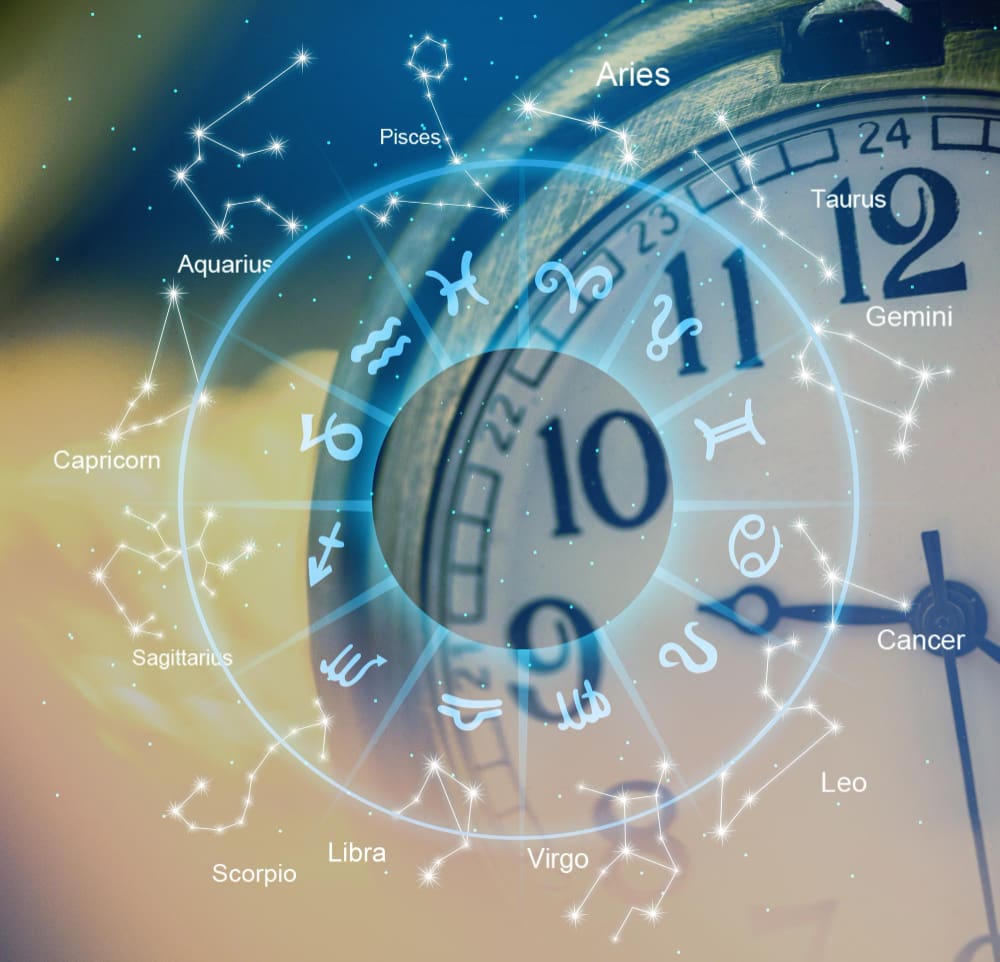Horary astrology is a specialized and ancient divinatory practice that provides a direct, concrete answer to a specific question by casting and interpreting an astrological chart for the exact moment and location that question is asked and understood by an astrologer. Anyone with a pressing, sincere concern can be the querent (the one asking), seeking clarity on matters from love and career to lost objects. This technique operates on the Hermetic principle of “as above, so below,” positing that the answer to a question is symbolically embedded in the planetary configuration of the moment it is born into consciousness, offering targeted guidance unavailable through broader natal chart analysis.
What is Horary Astrology? A Celestial Consultation
Unlike natal astrology, which analyzes the birth chart of a person to understand their lifelong personality, potential, and challenges, horary focuses on a single, pressing question. Think of it as a celestial consultation. The chart generated is not for a person, but for the question itself.
This makes it a remarkably focused and practical tool. While a natal chart offers a sweeping overview of your life’s journey, a horary chart acts like a highly specific snapshot. It’s designed to answer questions like, “Will I get this job?” or “Are my lost keys in the house?” rather than “What career am I best suited for?”
The practice is rooted in the belief that a sincere question doesn’t arise in a vacuum. It surfaces at a moment when the cosmic energies are uniquely aligned to reflect the nature of the problem and its potential resolution. The astrologer’s role is to act as a translator for this celestial language.
The Origins of the “Question Chart”
Horary is one of the oldest forms of astrology, with roots stretching back to Hellenistic and Arabic traditions. It flourished for centuries as a primary method of divination, used by everyone from kings seeking advice on battle to merchants wondering if a shipment would arrive safely.
Its peak in the Western world occurred during the Renaissance and the 17th century. The English astrologer William Lilly is perhaps its most famous practitioner. His 1647 masterwork, Christian Astrology, remains the foundational text for most modern horary astrologers.
Lilly used horary to diagnose illnesses, predict the outcomes of political events, locate missing persons, and answer a vast array of everyday questions for his clients. In an era without modern technology, horary astrology served as a vital source of information and guidance, providing answers that were otherwise unobtainable.
How Does a Horary Reading Work? The Step-by-Step Process
A horary reading follows a structured and logical process. The astrologer doesn’t rely on psychic intuition but on a set of ancient, established rules to dissect the chart and arrive at a judgment. The precision of this method is what gives it its power.
Step 1: Forming the Perfect Question
The entire process begins with the question. For a horary chart to yield a clear answer, the question must be sincere, specific, and born of genuine concern. The universe doesn’t respond well to idle curiosity or hypothetical scenarios. You must truly care about the outcome.
A good horary question is one that can be answered with a “yes” or “no,” or that seeks a specific piece of information. For example, “Will I get the promotion I applied for?” is a strong question. A weaker question would be, “What should I do with my career?” as it’s too broad and better suited for a natal chart reading.
It is also crucial to ask only one question at a time. “Should I take this new job and move to a new city?” is actually two questions. The astrologer would need to address them separately to avoid a confused and unreadable chart.
Step 2: Casting the Horary Chart
Once the question is finalized, the astrologer notes the exact time, date, and their own geographical location. This data is the cornerstone of the reading. It is not the time the querent thought of the question, but the moment the astrologer receives and understands it, as this is when the question is “born” into the world for analysis.
Using this information, the astrologer generates a chart that looks identical to a birth chart, with twelve houses, the planets, the Ascendant, and other significant points. This chart, however, is the “birth chart” of the question itself, and every element within it relates directly to the query.
Step 3: Identifying the Key Players (Planets and Houses)
The next step is to assign roles to the planets. In horary, the person asking the question (the querent) is always represented by the ruler of the 1st House, also known as the Ascendant. The planet ruling the zodiac sign on the Ascendant becomes the querent’s primary “significator.”
The subject of the question (the quesited) is found in one of the other eleven houses, depending on its topic. Traditional house meanings are strictly applied:
- 2nd House: Personal finances, movable possessions. “Will I get the raise?”
- 4th House: The home, family, real estate. “Will my offer on the house be accepted?”
- 6th House: Health, employees, lost pets. “Will my cat return home?”
- 7th House: Relationships, marriage, partners, open enemies. “Does he truly love me?”
- 10th House: Career, reputation, the boss. “Will the company hire me?”
The planet that rules the sign on the cusp of the relevant house becomes the significator for the quesited. For a question about a job (10th House), if the 10th House cusp is in Aries, then Mars (the ruler of Aries) represents the job.
Step 4: Analyzing the Aspects and Dignities
With the main players identified—the querent’s planet and the quesited’s planet—the astrologer examines the relationship between them. This is primarily done by looking at the aspects, which are the geometric angles between the planets.
An applying aspect (where the faster-moving planet is moving toward an exact angle with the slower one) between the two significators is the strongest testimony for a “yes.” It shows that the querent and the thing they desire are moving toward a connection. A harmonious aspect like a trine or sextile suggests an easy, favorable outcome, while a challenging aspect like a square or opposition suggests the outcome will happen, but with difficulty or obstacles.
The strength of each planet is also assessed. This is known as dignity and debility. A planet in a sign it rules (e.g., Venus in Taurus) is in its domicile and is strong, capable, and effective. A planet in a sign of its detriment or fall (e.g., Venus in Aries) is weak and struggles to act, suggesting a poor-quality outcome even if the event comes to pass.
Reading the Signs: Interpreting the Answer
The final judgment synthesizes all these factors into a coherent answer. While the process is technical, the interpretation is an art that requires skill and adherence to tradition.
The “Yes” or “No” Indicators
The simplest answer comes from the aspects. A close, applying aspect between the significator of the querent and the significator of the quesited is a classic “yes.” The nature of the aspect (harmonious or challenging) describes how it will happen.
If there is no applying aspect between them, the answer is generally “no.” This indicates that nothing connects the querent to the thing they seek. A separating aspect (where the planets have already passed their exact angle) shows that the opportunity has passed or the matter is already concluded.
Sometimes, other planets can interfere. A phenomenon called prohibition occurs when another planet aspects one of the significators before they can connect, symbolizing something or someone getting in the way. This is a classic “no, because…” scenario.
Considerations Before Judgment: The Strictures
Traditional horary has built-in quality controls known as “strictures against judgment.” These are indicators that the chart may be unreliable or unreadable, and the astrologer should be cautious about proceeding.
One famous stricture is when the Ascendant is in the first three degrees of a sign, suggesting it’s “too early to tell.” If the Ascendant is in the last three degrees, the matter is already decided, and the querent is likely past the point of influencing the outcome. Another key indicator is a Void of Course Moon, which means the Moon will make no more major aspects before leaving its current sign. This is a powerful testimony that “nothing will come of the matter.”
Beyond Yes or No: The Nuances of the Chart
A good horary reading provides more than a simple yes or no. The entire chart is a story. The condition of the querent’s planet reveals their state of mind and power in the situation. The condition of the quesited’s planet shows the quality of the thing being asked about.
For instance, if you ask, “Will I get the job?” and the job’s significator is in its fall, the chart might indicate “yes,” but the job itself will be disappointing, poorly paid, or unstable. The Moon, acting as a co-significator for the querent, is also crucial. Its last aspect reveals the immediate past, while its next aspect points to the immediate future, providing a narrative flow to the situation.
When to Use Horary Astrology
Horary shines when you are at a crossroads and need a clear, actionable answer. It is best used for questions that are concrete, specific, and important to you.
It is the perfect tool for finding lost objects, as specific houses and signs can describe locations. It excels at questions about relationships, job offers, legal disputes, and financial transactions. In these cases, the binary nature of the potential outcome lends itself perfectly to horary’s direct approach.
However, it is not the right tool for everything. Avoid asking about broad, existential topics like your life’s purpose, as that is the domain of natal astrology. It is also considered poor form to ask the same question repeatedly in hopes of getting a different answer or to ask questions out of mere sport. The sincerity of the query is paramount.
Ultimately, horary astrology is a powerful and elegant system of divination. It offers a unique window into a specific moment, capturing the cosmic reflection of a personal concern. By asking a sincere question, you invite the universe to provide an answer, transforming a moment of uncertainty into an opportunity for profound clarity and direction.








